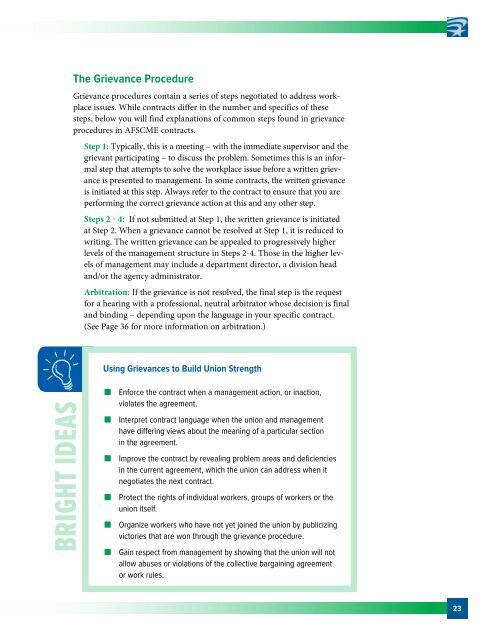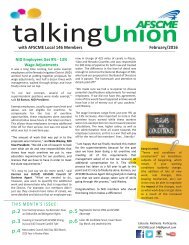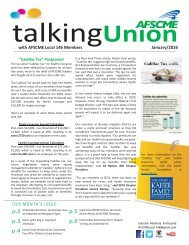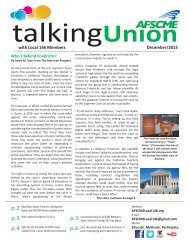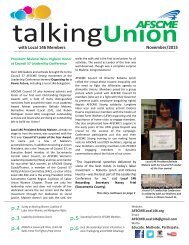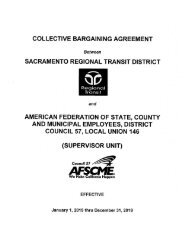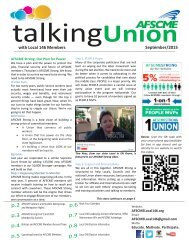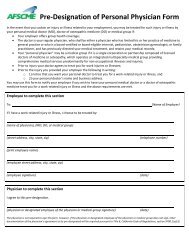STEWARD HANDBOOK
Create successful ePaper yourself
Turn your PDF publications into a flip-book with our unique Google optimized e-Paper software.
The Grievance Procedure<br />
Grievance procedures contain a series of steps negotiated to address workplace<br />
issues. While contracts differ in the number and specifics of these<br />
steps, below you will find explanations of common steps found in grievance<br />
procedures in AFSCME contracts.<br />
Step 1: Typically, this is a meeting – with the immediate supervisor and the<br />
grievant participating – to discuss the problem. Sometimes this is an informal<br />
step that attempts to solve the workplace issue before a written grievance<br />
is presented to management. In some contracts, the written grievance<br />
is initiated at this step. Always refer to the contract to ensure that you are<br />
performing the correct grievance action at this and any other step.<br />
Steps 2 - 4: If not submitted at Step 1, the written grievance is initiated<br />
at Step 2. When a grievance cannot be resolved at Step 1, it is reduced to<br />
writing. The written grievance can be appealed to progressively higher<br />
levels of the management structure in Steps 2-4. Those in the higher levels<br />
of management may include a department director, a division head<br />
and/or the agency administrator.<br />
Arbitration: If the grievance is not resolved, the final step is the request<br />
for a hearing with a professional, neutral arbitrator whose decision is final<br />
and binding – depending upon the language in your specific contract.<br />
(See Page 36 for more information on arbitration.)<br />
Using Grievances to Build Union Strength<br />
Bright Ideas<br />
n<br />
n<br />
n<br />
n<br />
Enforce the contract when a management action, or inaction,<br />
violates the agreement.<br />
Interpret contract language when the union and management<br />
have differing views about the meaning of a particular section<br />
in the agreement.<br />
Improve the contract by revealing problem areas and deficiencies<br />
in the current agreement, which the union can address when it<br />
negotiates the next contract.<br />
Protect the rights of individual workers, groups of workers or the<br />
union itself.<br />
n Organize workers who have not yet joined the union by publicizing<br />
victories that are won through the grievance procedure.<br />
n<br />
Gain respect from management by showing that the union will not<br />
allow abuses or violations of the collective bargaining agreement<br />
or work rules.<br />
23


